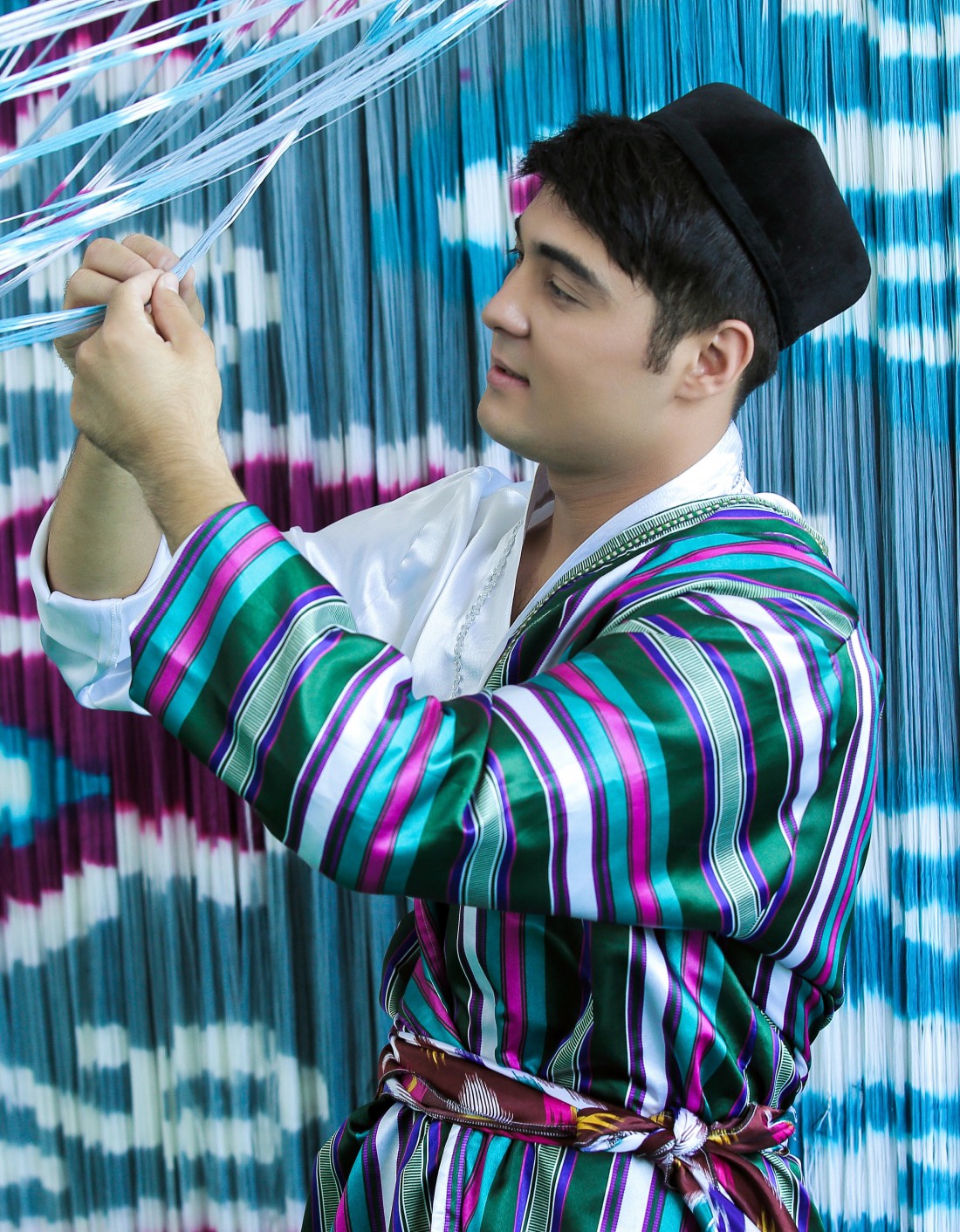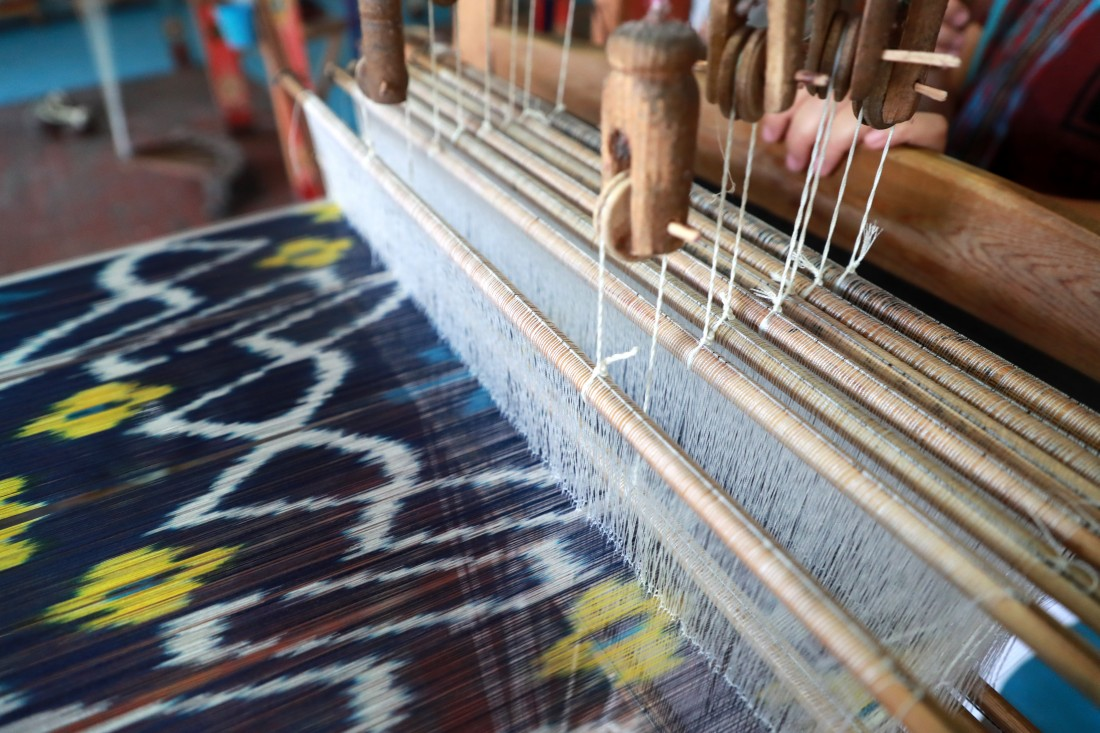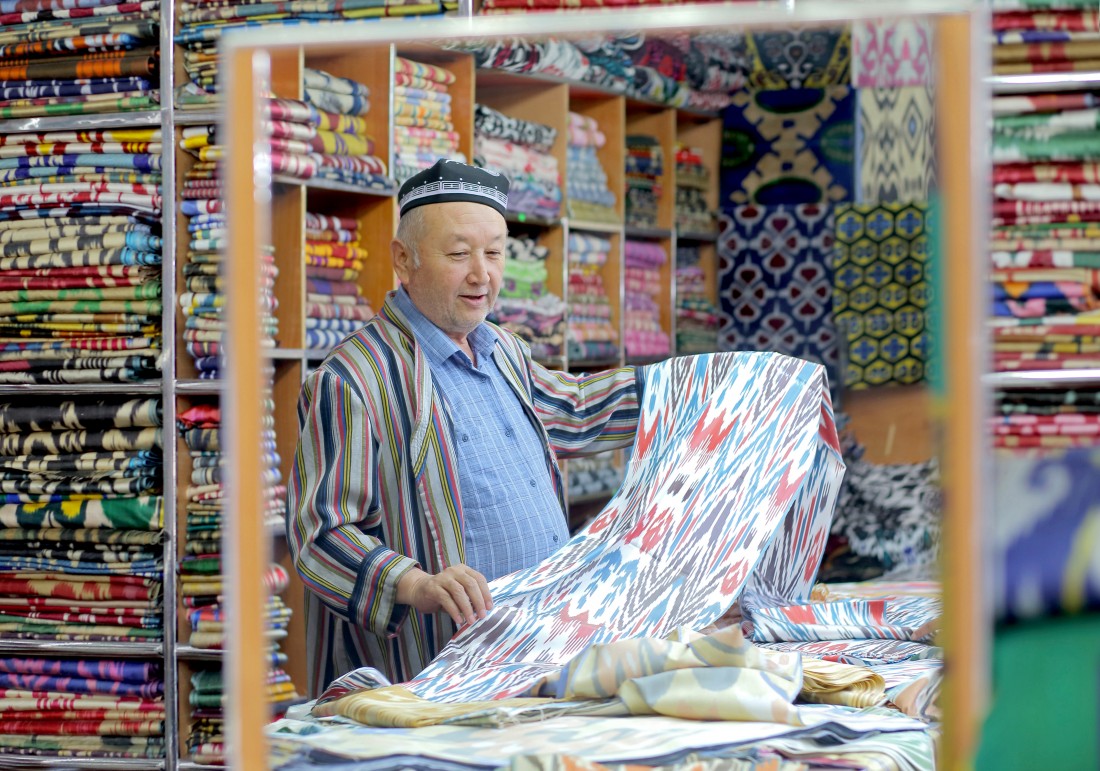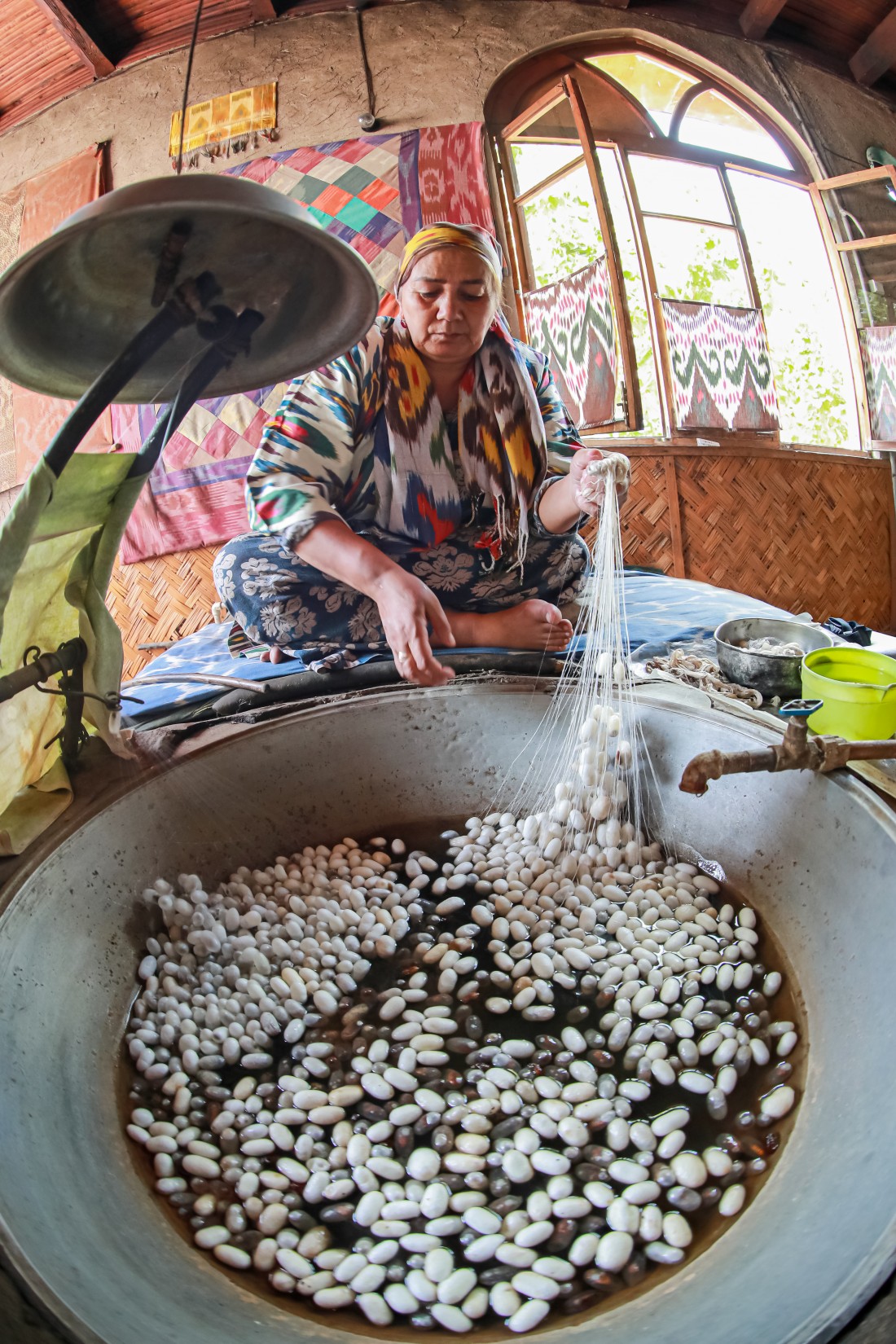Did you know that one silk thread is eight times thinner than a human hair, but at the same time it is much stronger? To create one silk dress, you need about two thousand caterpillars, which need to eat the leaves of almost two mulberry trees.
Since the Great Silk Road, for several millennia, Uzbek silk products have been highly valued. For example, Margilan silk was literally worth its weight in gold and regularly became a means of payment. Made by ancient technologies, silk threads give rise to the indescribable beauty of high-quality fabrics known throughout the world.
The appearance of the Uzbek silk goes back to the second millennium BC, during the most famous trade route connecting East and West. The legend tells how one of the rulers of the Ferghana Valley became interested in silk products from China. Then he certainly wanted to produce silk in his homeland, and he ordered his subordinates to reveal the secrets of the technology of making Chinese silk.
So, according to legend, silk production began in the Ferghana Valley. And for more than four thousand years, silk products have been made in Uzbekistan: fabrics, carpets, clothes, hats, home decoration, national souvenirs and much more.
You may ask, why are silk fabrics so popular and highly valued? The fact is that Uzbekistan produces exclusively natural silk. It is distinguished by its softness, it is pleasant to feel it, it gently adheres to the body and flows beautifully. Silk clothes can be festive and elegant, casual and strict - it all depends on the lightness and density of the fabric. It is famous for such qualities as high strength, breathability (which is good for a hot climate), lightness and hypoallergenic, because the fabrics are painted exclusively with natural dyes.

Today, the silk industry in Uzbekistan continues to develop dynamically. In 2017, the association "UZBEKIPAKSANOAT" was created. The main objective of the association is to improve the production of silkworm cocoons, as well as their processing and manufacture of silk fabrics. Collaboration is ongoing with local and global manufacturers, and self-employed silk producers are supported and encouraged. Today, Uzbekistan ranks third in silk production in the world after China and India. The main goal of the association is to help Uzbekistan become a world leader in this production.
It is important to emphasize how complex and time-consuming the process of producing silk threads is. One silkworm butterfly lays up to five hundred eggs. Twenty-five days later, caterpillars appear, which must be provided with mulberry leaves for eating. For one month, mulberries eat leaves, then, having increased tenfold in weight, they begin to weave a silk cocoon around them. It is important for masters to release cocoons on time and dissolve the protective layer in hot water. In the final part of the work, plexus and thread processing are carried out to obtain a snow-white color.
Margilan remains the largest center for the production of natural silk. There are two factories in the city: Yodgorlik and Khan Atlas. Silk fabrics “khan-atlas” and semi-silk “adras” are made there. A little advice on how to distinguish natural silk from artificial silk. To do this, just pull out a few silk threads and set them on fire. Natural silk will not burn, but a slight smell of burnt hair will appear.
Comment